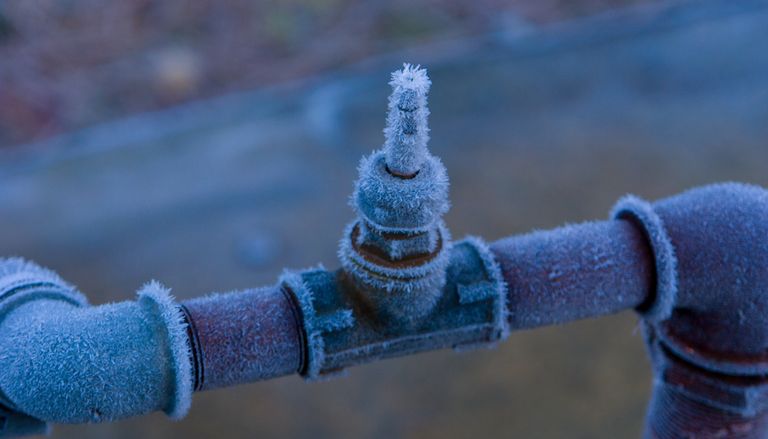How to Defend Plumbing System from Freezing: Key Advice
How to Defend Plumbing System from Freezing: Key Advice
Blog Article
This great article down below on the subject of Winter Plumbing Precautions: Preventing Frozen Pipes is exceedingly intriguing. Have a go and make your own personal findings.

Winter can wreak havoc on your plumbing, particularly by freezing pipelines. Below's just how to stop it from taking place and what to do if it does.
Intro
As temperature levels decrease, the risk of frozen pipelines boosts, potentially resulting in costly fixings and water damages. Understanding how to stop frozen pipelines is important for house owners in cold climates.
Recognizing Icy Pipelines
What triggers pipes to freeze?
Pipes ice up when subjected to temperatures listed below 32 ° F (0 ° C) for extended durations. As water inside the pipelines freezes, it increases, taxing the pipe wall surfaces and possibly causing them to rupture.
Threats and problems
Frozen pipes can cause water supply interruptions, building damage, and expensive repair work. Burst pipes can flood homes and create extensive structural damage.
Indicators of Frozen Piping
Determining icy pipelines early can stop them from breaking.
How to identify frozen pipelines
Look for decreased water circulation from taps, unusual odors or sounds from pipes, and visible frost on subjected pipelines.
Avoidance Tips
Insulating prone pipelines
Cover pipes in insulation sleeves or utilize heat tape to secure them from freezing temperature levels. Concentrate on pipelines in unheated or external areas of the home.
Heating techniques
Keep interior spaces effectively warmed, specifically locations with pipes. Open up closet doors to allow warm air to distribute around pipes under sinks.
Protecting Outside Plumbing
Garden hoses and outdoor taps
Disconnect and drain pipes yard hose pipes prior to winter months. Set up frost-proof spigots or cover outdoor taps with insulated caps.
What to Do If Your Pipelines Freeze
Immediate activities to take
If you suspect icy pipes, maintain faucets open to soothe pressure as the ice thaws. Utilize a hairdryer or towels taken in hot water to thaw pipes gradually.
Long-Term Solutions
Architectural adjustments
Consider rerouting pipelines far from exterior wall surfaces or unheated areas. Add added insulation to attics, cellars, and crawl spaces.
Updating insulation
Invest in top quality insulation for pipelines, attics, and walls. Appropriate insulation aids keep consistent temperatures and minimizes the threat of icy pipes.
Conclusion
Preventing frozen pipes needs positive procedures and fast actions. By recognizing the reasons, indicators, and safety nets, home owners can shield their pipes throughout cold weather.
5 Ways to Prevent Frozen Pipes
Drain Outdoor Faucets and Disconnect Hoses
First, close the shut-off valve that controls the flow of water in the pipe to your outdoor faucet. Then, head outside to disconnect and drain your hose and open the outdoor faucet to allow the water to completely drain out of the line. Turn off the faucet when done. Finally, head back to the shut-off valve and drain the remaining water inside the pipe into a bucket or container. Additionally, if you have a home irrigation system, you should consider hiring an expert to clear the system of water each year.
Insulate Pipes
One of the best and most cost-effective methods for preventing frozen water pipes is to wrap your pipes with insulation. This is especially important for areas in your home that aren’t exposed to heat, such as an attic. We suggest using foam sleeves, which can typically be found at your local hardware store.
Keep Heat Running at 65
Your pipes are located inside your walls, and the temperature there is much colder than the rest of the house. To prevent your pipes from freezing, The Insurance Information Institute suggests that you keep your home heated to at least 65 degrees, even when traveling. You may want to invest in smart devices that can keep an eye on the temperature in your home while you’re away.
Leave Water Dripping
Moving water — even a small trickle — can prevent ice from forming inside your pipes. When freezing temps are imminent, start a drip of water from all faucets that serve exposed pipes. Leaving a few faucets running will also help relieve pressure inside the pipes and help prevent a rupture if the water inside freezes.
Open Cupboard Doors
Warm your kitchen and bathroom pipes by opening cupboards and vanities. You should also leave your interior doors ajar to help warm air circulate evenly throughout your home.

As an enthusiastic person who reads on How to prepare your home plumbing for winter weather, I imagined sharing that excerpt was sensible. Are you aware of someone else who is serious about the topic? Be sure share it. Thanks a lot for your time spent reading it.
Source This Article Report this page